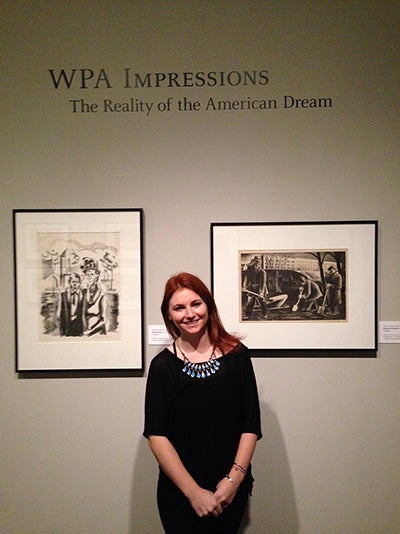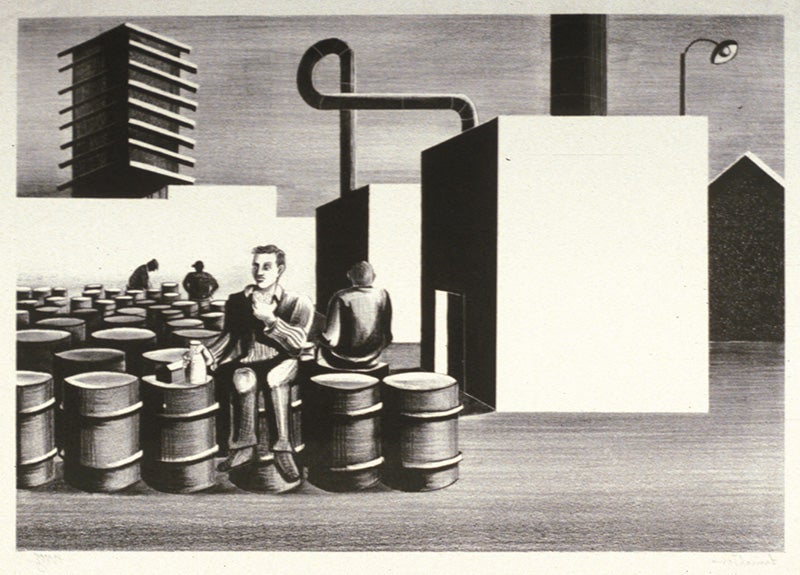The Jordan Schnitzer Museum of Art presents a selection of Works Progress Administration (WPA) prints, which have been on long-term loan to the museum from the federal government since 1956. Curated by Merrit Thompson, a senior in the Department of the History of Art and Architecture, the exhibition is on view in the Morris Graves Gallery through July 27, 2014. The show supports the Eugene Public Library’s 2014 Big Read (F. Scott Fitzgerald’s “The Great Gatsby”), a program of the National Endowment for the Arts in partnership with Arts Midwest.

“The WPA artists represented in this display shared the plight of the common man and depicted the realities of everyday life—good and bad,” says Thompson. “These artists, both male and female, worked in several geographic regions of the United States and came from divergent backgrounds. Still, they all shared the difficulties of everyday life, and, therefore, often depicted the harshness of the Great Depression.”
On Friday, April 4, at noon, Thompson will lead a curator’s gallery talk at the museum, 1430 Johnson Lane on the UO campus.
The Great Depression followed the prosperous and optimistic Roaring Twenties. The hardships of the 1930s -- bank closures, high unemployment, and devastating drought -- inspired the enactment of the WPA by the U.S. government in 1935, which allowed many American artists to earn livable wages during this period.
In “WPA Impressions,” isolation, woeful faces, confusion within the crowd, and desolate landscapes are contrasted with images of revelry, ambition, and hope for better times to come. Artists use the varied mediums of the prints to express raw emotion.
According to Thompson, the prints also contain a sense of realism in both corporeal and sensory experiences, which is juxtaposed against the abstraction of many compositions’ backgrounds. Some artists chose optimistic subjects, especially “the American Dream.” These prints captured the fantasy and excitement prevalent in pop culture during the 1930s, offering an escape into better times.
Above: Merrit Thompson, a senior in the Department of the History of Art and Architecture, curated the exhibit.

Above: John W. Beauchamp, The Midway, circa 1935, Lithograph, Allocated by the U.S. Government Commissioned through the New Deal art projects; WPA56:1.9

Above: Herman Volz, Lunch Time, circa 1935, Lithograph, Allocated by the U.S. Government Commissioned through the New Deal art projects; WPA56:1.216
